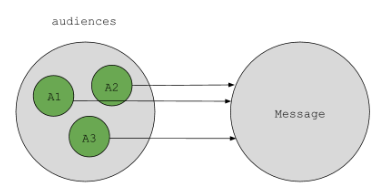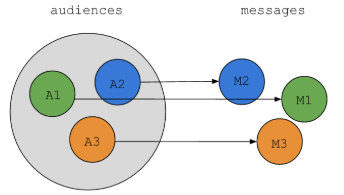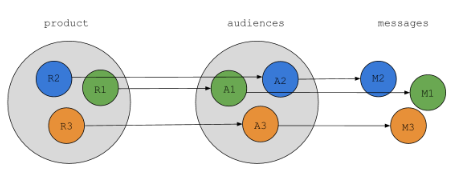A practical approach for using audiences in your customer journey
Data is the new gold and in the world of digital marketing it comes in the form of audiences. As soon as it became obvious that data could hold the key to more potential revenue, companies started harvesting it at an accelerating pace. However, as it turns out so many years later, not many have succeeded into turning these raw materials (or data points) into money. We stated in our previous read that the main cause for this should be found in the lack of structure within the ecosystem, making it hard for marketers to develop this raw material into a valuable resource of income. During this article we’ll explore how audiences are being put to use today and how this could be improved.
Even though companies are claiming they are putting audiences at the center of their marketing approach, they are typically deployed in a very classical and somewhat old fashioned way. We know that different audiences exists, each with their characteristics. It’s the role of marketeer to carve out the relevant audiences from the generic population. Once this exercise has been completed these data points will be baptised the “target audience” and they will be the subject of the company’s campaign. This has been done ever since TV and radio have emerged as the popular channels to reach potential customers. Back then it was a way to determine how a certain budget could be put to use in the most ‘efficient way’. A graphical representation of what this looks like can be found below.

Unfortunately it’s often also the way how digital campaigns are being run. Think about it - Marketeers do buy different, well scoped audiences, specifically for their characteristics. Nevertheless most of the time they are all served with the same content. That advertisers and marketeers still adopt the power of millions of data points in such a superficial way is surprising. Typically this occurs when businesses have a history in above the line advertising. Moreover, they often are so focused on themselves (self-centric) that it skews their interpretation of the concept ‘relevance’. As a result they push a message they think is important (relevant to themselves), to superficially segmented audiences. The result is simply an above the line plan put in a digital context. Best case we’ll be only tapping a fraction of what audience data has to offer.
A much smarter way of applying these features is what we call a user-centric approach. In this approach marketeers (and the business) focuses on the users. The goal is to ensure your message is tailored to your audience, making it relevant. This simple realisation in the form of a connection between audience and message will allow a company to leverage the true potential of audiences.

The question that is core to this approach is: “Who are the potential customers of my product, and what are their main concerns?”. This forces us to invert the self centric-model towards a client-centric model. This is the result of a strategic exercise that usually happens at product level (even though brand factors do play a crucial role). Each product can in this case be linked to audiences. The angles at which this can be done can differ. Increasingly the notion of Moments-that-matter, Micro moments or Moments-of-truth pops up. This implies that people are being confronted with specific needs at a specific point in time or in a particular context to which your product or service could provide an answer. This methodology forces marketeers to think about their product or service from a customer point of view (“when is my product / service relevant in the life of my consumer?”) and define reasons for which this product could be relevant to a consumer. These reasons are often time bound and pop-up at certain points in time / life (more on that later). Using this methodology, we’re using the concept ‘relevancy’ the way it is meant to be used as this concept forces our ads to be relevant to the user, making them stand out by definition.

Of course, this was simply the pitch. The user now has been exposed to our message and as our message should be ‘relevant’ by design, we should trigger an action / reaction. At this point it’s up to us to deliver what we promised.

On the website the customer journey has to maintain the customisation and relevancy aspect. Ideally this is done through a custom landing or adapted page. Breaking the customer-centric pattern would turn our pitch into an illusion and would shatter the journey. The user would feel lied to. An adapted landing page and process are therefore crucial.

If you have the additional resource, throw in a dataLayer. This helps to contextualise the user’s profile and bind it to a session or user. It ensures that you’ll be able to address the user in the appropriate context, taking into account his concerns that lead to the visit.
All-in-all the true value of deploying a successful audience strategy lies in your ability to connect the issue your product is solving with the users who might be facing it while realising that every audience deserves its own message.



